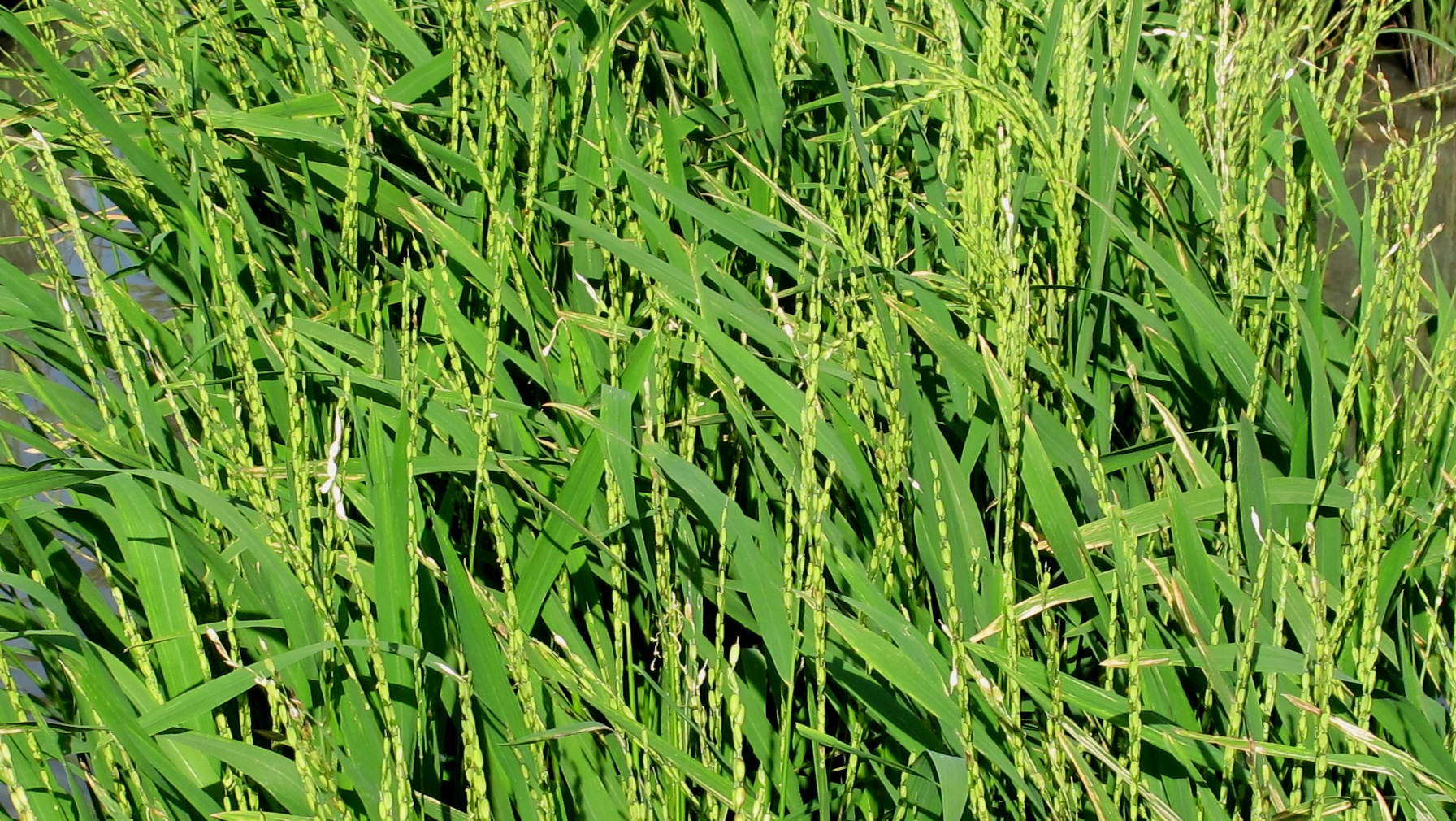A rice genome to feed the world
July 31, 2014

Understanding the complete genome of African rice will enable researchers and agriculturalists to develop new varieties of rice with African rice’s hardiness, making them better able to adapt to conditions of a changing climate. (Credit: International Rice Research Institute)
An international team of researchers led by the University of Arizona (UA) has sequenced the complete genome of African rice.
The genetic information will enhance scientists’ and agriculturalists’ understanding of the growing patterns of African rice, and help development of new rice varieties that are better able to cope with increasing environmental stressors to help solve global hunger challenges, the researchers say.
The research paper was published in Nature Genetics (open access).
The 9 billion-people question
“Rice feeds half the world, making it the most important food crop,” said Rod A. Wing, director of the Arizona Genomics Institute at the UA . “Rice will play a key role in helping to solve what we call the 9-billion-people question.”
The 9 billion-people question refers to predictions that the world’s population will increase to more than 9 billion people — many of whom will live in areas where access to food is extremely scarce — by the year 2050. The question lies in how to grow enough food to feed the world’s population and prevent the host of health, economic and social problems associated with hunger and malnutrition.
Now, with the completely sequenced African rice genome, scientists and agriculturalists can search for ways to cross Asian and African species to develop new varieties of rice with the high-yield traits of Asian rice and the hardiness of African rice.
“African rice is once more at the forefront of cultivation strategies that aim to confront climate change and food availability challenges,” said Judith Carney, a professor in the Department of Geography and the Institute of the Environment and Sustainability at the University of California, Los Angeles, and author of “Black Rice.” The book describes the historical importance of African rice, which was brought to the United States during the period of transatlantic slavery.
Carney is also a co-author on the Nature Genetics paper, and her book served as one of the inspirations behind sequencing the African rice genome.
Although it is currently cultivated in only a handful of locations around the world, African rice is hardier and more resistant to environmental stress in West African environments than Asian varieties, Wing said.
African rice already has been crossed with Asian rice to produce new varieties under a group known as NERICA, which stands for New Rice for Africa.
The African rice genome is especially important because many of the genes code for traits that make African rice resistant to environmental stress, such as long periods of drought, high salinity in the soils and flooding.
“Now that we have a precise knowledge of the genome we can identify these traits more easily and move genes more rapidly through conventional breeding methods, or through genetic modification techniques,” noted Wing, who is also a member of the UA’s BIO5 Institute and holds the Axa Endowed Chair of Genome Biology and Evolutionary Genomics at the International Rice Research Institute. “The idea is to create a super-rice that will be higher yielding but will have less of an environmental impact — such as varieties that require less water, fertilizer and pesticides.”
Super-crop centers
Wing is also working with Quifa Zhang from Huazhong Agricultural University in Wuhan, China, to create a set of super-crop science and technology centers around the world, where focused and coordinated efforts could help solve the 9 billion-people question. “We really only have about 25 years to solve this problem, and if we’re always competing with each other it’s not going to work,” he said.
In November, Wing and his collaborators will celebrate the 10th anniversary of the completion of the Asian rice genome and the new completion of the African rice genome at the 12th International Symposium on Rice Functional Genomics, a conference that will be held in Tucson, Arizona.
Sequencing of the African rice genome was made possible by National Science Foundation grants to the Oryza Map Alignment and Oryza Genome Evolution Projects.
Abstract of Nature Genetics paper
The cultivation of rice in Africa dates back more than 3,000 years. Interestingly, African rice is not of the same origin as Asian rice (Oryza sativa L.) but rather is an entirely different species (i.e., Oryza glaberrima Steud.). Here we present a high-quality assembly and annotation of the O. glaberrima genome and detailed analyses of its evolutionary history of domestication and selection. Population genomics analyses of 20 O. glaberrima and 94 Oryza barthii accessions support the hypothesis that O. glaberrima was domesticated in a single region along the Niger river as opposed to noncentric domestication events across Africa. We detected evidence for artificial selection at a genome-wide scale, as well as with a set of O. glaberrima genes orthologous to O. sativa genes that are known to be associated with domestication, thus indicating convergent yet independent selection of a common set of genes during two geographically and culturally distinct domestication processes.